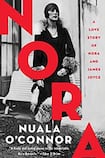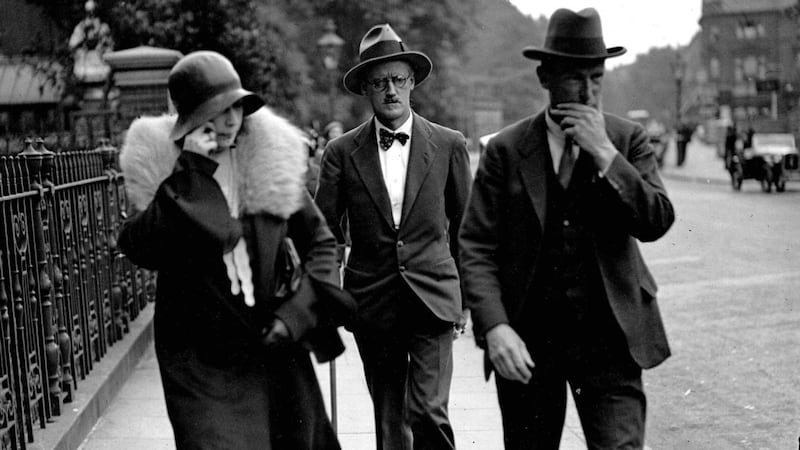
I had the pleasure of a pilgrimage to Dublin one year for Bloomsday, replete with the requisite pint at Davy Byrne’s, soap from Sweny’s and a Sandycove swim. James Joyce set Ulysses on June 16th, 1904, as a tribute to the day he first “walked out” with Nora Barnacle. In her fifth novel, Nuala O’Connor recounts Nora’s life from that fateful rendezvous. A portion of Nora first appeared in Granta as a short story, Gooseen, which won the 2018 Short Fiction Prize.
Joycean Dublin is well-trodden ground, not least by Edna O’Brien, but O’Connor keeps the story fresh with the vivid language of her fictionalised biography. A chambermaid from Galway, Nora’s voice is frank and earthy. “The river smells like a pisspot spilling its muck into the sea,” she tells Jim as they walk along the Liffey.
Although objecting to the “sleazy little scenes” in his novels, Nora, on whom “bawdy” Molly Bloom was modelled, is lusty: “our two mouths crash together and it’s all swollen tongues and drippy spit and our fronts pressed hard and a tight-bunched feeling between my legs. His hands travel over my bodice and squeeze, making me gasp.” Jim then pulls his “one-eyed maneen” out of his trousers and she kneels. (We are, mind you, only on page one.)
The couple’s heady start in Dublin is soon overshadowed by troubles when they elope to Zurich, followed by a peripatetic lifestyle including stints in Trieste, Rome and Paris. Despite his genius, Jim is “a man the same as any other, with all a man’s frauds and faults”. Nora has to take in washing to supplement his salary while he goes out drinking and philandering. They import Joyce siblings from Dublin to help out, principally Jim’s long-suffering brother Stanislaus.
Health problems
The couple both confront health problems: Nora has a hysterectomy for uterine cancer, while Jim suffers from degenerating eyesight (now speculated to be the result of syphilis). She frets about their son Giorgio when he takes up with an older woman, and her “heart ruptures with worry” for their daughter Lucia, whose “skittery-scattery look” is eventually diagnosed as schizophrenia. “Oh God, have we made her this way?” Nora despairs.
When Jim invests in Dublin’s first cinema (which will later go bust), Nora nods her head and sips her tea, “remembering the plan to be a bank clerk in Rome, and the plan to import tweed, and the other one to bring skyrockets to Trieste, and the plan to work in the new university in Dublin, and the plan to move to Florence”.
Still, for all of her suffering Nora is no pushover, balking when he falsely accuses her of betrayal. As Nora’s biographer Brenda Maddox wrote, even at 20 “Nora had self-respect, and courage”. She had run away from Galway, fleeing a tyrannical uncle, to build a life in Dublin on her own.

Nora begins to wonder if hers “isn’t a blighted wifehood”. It isn’t even an official one: Joyce resisted marriage, not wanting to be “bound by any church”; the two only married in 1931 to ensure inheritance. And yet she sticks to him like the Barnacle she is. O’Connor deftly depicts the strength of Nora’s attachment to an adoring but exasperatingly unreliable man. Inspired by Joyce’s famous “dirty letters” (his correspondence is under copyright and little of Nora’s remains), O’Connor imagines their erotic epistolary exchanges: deliciously filthy (and mercifully flatulence-free, unlike the real-life letters).
Old-fashioned relationship
Their relationship strikes Nora as downright old-fashioned compared with the amorous criss-crossing among some of their social circle in Paris. As Joyce’s acclaim grows, we see them in society with characters including Peggy Guggenheim, Djuna Barnes, the Hemingways, and of course Samuel Beckett, the object of Lucia’s obsession. Joyce’s writing career unfolds in the background. “I’m more for penny dreadfuls and romances, myself,” Nora tells Sylvia Beach. “Them or the Daily Mail.”
Nora observes Jim’s frustrations getting Dubliners published and the boost of the success of A Portrait of the Artist as a Young Man. She believes his claim that Ulysses will “be like no other book ever written” because to her it sounds “like nothing but codology, strings of baby babble”. She can nonetheless “fathom bits” of Finnegans Wake, detecting “a shining beauty in the mad soup of its words”.
Richard Ellmann, Joyce’s biographer, famously told Maddox that he was “not too keen” on “book-length studies of people who are clearly not of great importance themselves, but only as an adjunct to others”. Whether Nora directly influenced Joyce’s writing, as some scholars have argued, or was more of a muse, O’Connor’s fleshed-out “little f**kbird” is no adjunct.
“Nora,” Jim tells her, “You are syllable, word, sentence, phrase, paragraph and page. You’re fat vowels and shushing sibilants. Nora… you are story.”














